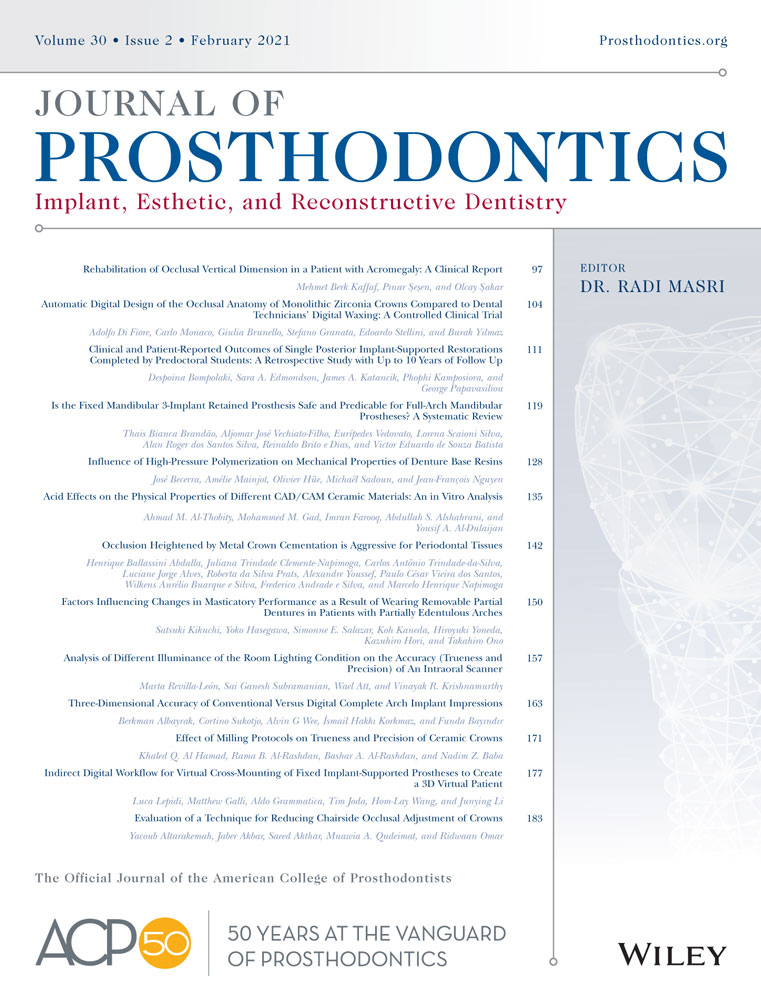Three-Dimensional Accuracy of Conventional Versus Digital Complete Arch Implant Impressions
Presented at the 25th Turkish Dental Association International Dental Congress, Istanbul, Turkey, September 2019
The authors deny any conflicts of interest in regards to this study.
Abstract
Purpose
The accuracy of digital impressions is still controversial for complete arch implant cases. The aim of this study is to compare the accuracy of different intraoral scanners with the conventional technique in terms of trueness and precision in a complete arch implant model.
Material and Methods
Eight implants were inserted asymmetrically in a polyurethane edentulous mandibular model with different angulations. A 3-dimensional (3D) reference model was obtained by scanning this polyurethane model with an optical scanner. First, digital impressions were made by using 3 different intraoral scanners: Carestream 3500 (DC), Cerec Omnicam (DO) and 3Shape Trios 3 (DT). Subsequently, a nonsplinted open tray impression technique was used for conventional impression group (C) and then the master casts were digitalized with a lab scanner. Each 10 STL files belonging to 4 different impression groups were imported to a reverse engineering program, to measure distance and angle deviations from the reference model. All statistical analyses were performed after taking absolute values of the data. After comparing the impression groups with one-way ANOVA, the trueness and precision values were analyzed by Tukey post hoc test and 0.05 was used as the level of significance.
Results
The mean trueness of distance was 123.06 ± 89.83 µm for DC, 229.72 ± 121.34 µm for DO, 209.75 ± 47.07 µm for DT, and 345.32 ± 75.12 µm for C group (p < 0.0001). While DC showed significantly lower deviation compared to DO and C, no significant difference was found between DC and DT. C showed the highest distance deviation significantly in all groups; and no significant difference was found between DO and DT groups. In angle measurements; the trueness was 0.26° ± 0.07° for DC, 0.53° ± 0.42° for DO, 0.33° ± 0.30° for DT, and 0.74° ± 0.65° for C group. There was no significant difference between the groups in terms of angular trueness (p = 0.074). In terms of the precision for distance, the results of DC 80.43 ± 29.69 µm, DO 94.06 ± 69.96 µm, DT 35.55 ± 28.46 µm and C 66.97 ± 36.69 µm were determined (p = 0.036). The significant difference was found only between DT and DO among all groups. Finally, angular precision was determined to be 0.19° ± 0.11° for DC, 0.30° ± 0.28° for DO, 0.22° ± 0.19° for DT, and 0.50° ± 0.38° for Group C. No significant difference was found between the groups, in terms of angular precision (p = 0.053).
Conclusions
All digital impression groups yielded superior data compared to conventional technique in terms of trueness. DC formed the impression group with the highest trueness in both distance and angular measurements. The results of this in vitro study suggest the use of intraoral scanners compared to the conventional impression techniques in complete arch implant cases with high angulations.




